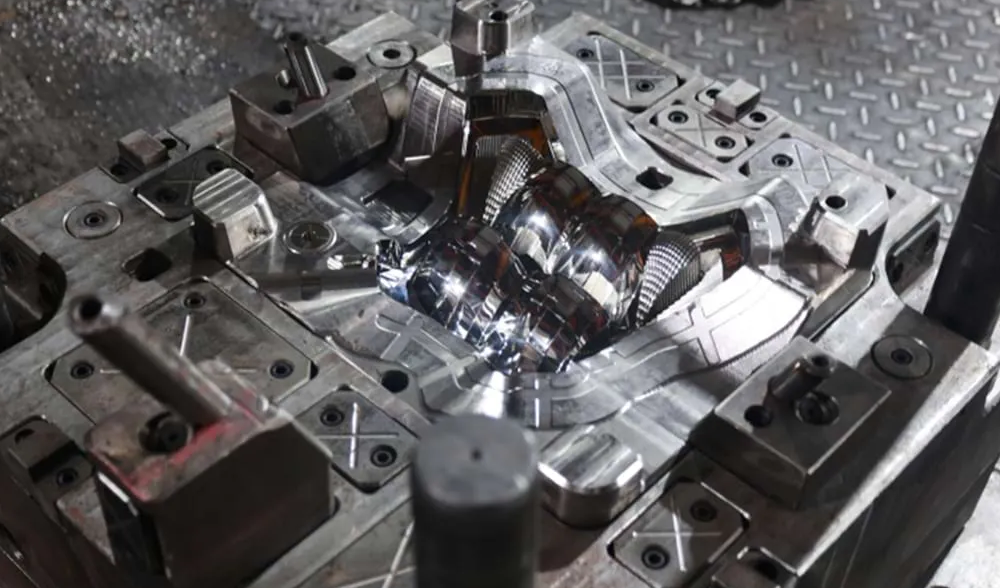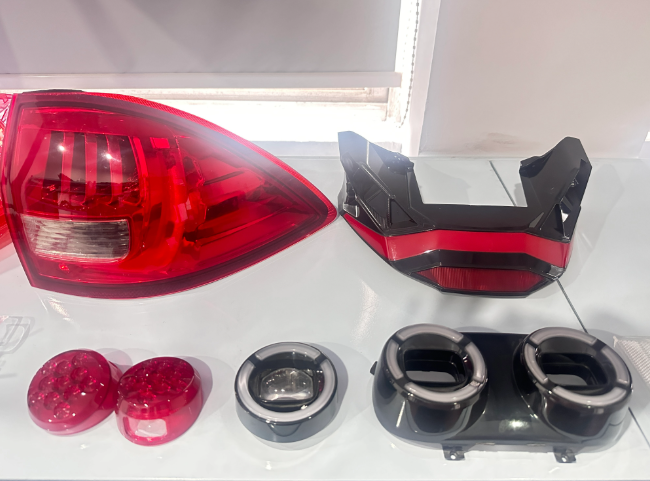Views: 0 Author: Site Editor Publish Time: 2025-03-28 Origin: Site











Rear lamps are essential for the safety and visibility of motorcycles. As a result, the design and production of rear lamp motorcycle moulds are critical in ensuring that these lamps function effectively.Rear lamps are a critical safety component for motorcycles, ensuring visibility in low-light conditions and alerting other road users to braking and turning maneuvers. Given their importance, the design and production of rear lamp motorcycle moulds must meet stringent standards for durability, precision, and optical performance. This article explores advanced techniques in mould manufacturing, with a focus on light guide strip integration and the challenges posed by thick-wall sections in rear lamp production.
Modern motorcycle rear lamps increasingly incorporate light guide strips (LGS) to achieve uniform illumination, sleek aesthetics, and enhanced brightness. Unlike traditional incandescent or basic LED setups, light guide strips distribute light evenly across the lamp’s surface, eliminating hotspots and ensuring consistent visibility from all angles.Optical Precision: The mould must be engineered to produce light guide channels with ultra-smooth surfaces to minimize light scattering and maximize efficiency.PMMA (acrylic) and polycarbonate are commonly used due to their high light transmission properties, but they require precise temperature control during injection molding to avoid defects like bubbles or warping.Light guide strips often include micro-prisms or diffuser patterns to optimize light distribution. Moulds must be machined with ultra-fine detailing (often via EDM or high-precision CNC milling) to replicate these features accurately.This article explores advanced techniques in rear lamp motorcycle mould design, with a focus on the use of light guide strips and the challenges of thick wall sections.

Rear lamps are crucial for the safety of motorcycles as they enhance visibility, especially during low-light conditions. They alert other road users of the motorcycle’s presence, direction, and intent to stop or change speed. This visibility is vital in preventing accidents and ensuring the rider’s safety.
A typical rear lamp motorcycle mould comprises several components, including the housing, lens, light source, and electrical connections. The housing protects the internal components from environmental elements, while the lens ensures optimal light distribution. The light source, often LED or incandescent, provides the necessary illumination, and the electrical connections power the lamp.
Mould design is critical in rear lamp production as it determines the precision and quality of the final product. A well-designed mould ensures consistent dimensions, durability, and functionality of the rear lamp. It also facilitates efficient production processes, reducing waste and production costs.
Light guide strips are increasingly being used in rear lamp designs to enhance light distribution and visibility. These strips, made from transparent or translucent materials, help in evenly distributing light across the lamp’s surface. This technique not only improves the lamp’s brightness but also ensures that the light is visible from different angles, enhancing safety.
Durability and weather resistance are paramount in rear lamp design. Moulds are designed using materials that can withstand harsh environmental conditions, including extreme temperatures, moisture, and UV radiation. Techniques such as using corrosion-resistant coatings and ensuring proper sealing of components are employed to achieve these qualities.
Advanced injection moulding techniques, such as gas-assisted injection moulding and multi-material injection moulding, are employed in rear lamp design. These techniques allow for the production of complex shapes, reduce material usage, and improve the mechanical properties of the lamps. They also facilitate the integration of different materials into a single component, enhancing functionality and aesthetic appeal.

Heat management is a significant challenge in rear lamp design, especially with the use of high-intensity light sources like LEDs. Excessive heat can damage the lamp’s components and reduce its lifespan. To address this challenge, moulds are designed with proper ventilation, heat sinks, and materials with high thermal conductivity to dissipate heat effectively.
Achieving optimal light performance involves balancing brightness, energy efficiency, and longevity. Mould designs focus on maximizing light output while minimizing energy consumption. This is achieved through the careful selection of light sources, the design of optical components, and the integration of advanced technologies like adaptive lighting systems.
Cost-effectiveness in production is a continuous challenge in rear lamp design. Mould designs aim to reduce production costs by minimizing material usage, streamlining the manufacturing process, and enhancing the durability of the lamps to reduce replacement and maintenance costs. This is achieved through the use of advanced materials, efficient production techniques, and innovative design solutions.
The future of rear lamp design lies in the integration of smart technologies. This includes the use of sensors, communication technologies, and adaptive lighting systems that can adjust the lamp’s brightness and pattern based on environmental conditions and the motorcycle’s speed. These technologies enhance safety and visibility, making motorcycles more conspicuous on the road.
Sustainability and eco-friendliness are becoming increasingly important in rear lamp design. Moulds are being designed with recyclable and biodegradable materials, reducing the environmental impact of production and disposal. Additionally, energy-efficient light sources and manufacturing processes are being prioritized to minimize carbon footprints.
Customization and personalization of rear lamps are emerging trends in motorcycle mould design. Moulds are being designed to accommodate a variety of shapes, sizes, and features, allowing manufacturers to cater to specific market demands and preferences. This not only enhances the aesthetic appeal of motorcycles but also provides functional benefits tailored to individual needs.
The design of rear lamp motorcycle moulds is a complex process that requires a deep understanding of both the technical and aesthetic aspects of motorcycle safety and visibility. By employing advanced techniques such as the use of light guide strips, designing for durability and weather resistance, and utilizing advanced injection moulding techniques, manufacturers can produce high-quality, effective rear lamps. However, challenges such as heat management, achieving optimal light performance, and ensuring cost-effectiveness must be carefully navigated. Looking ahead, the integration of smart technologies, sustainable design practices, and customization will likely shape the future of rear lamp motorcycle mould design, ensuring that motorcycles remain safe and visible on the road.
